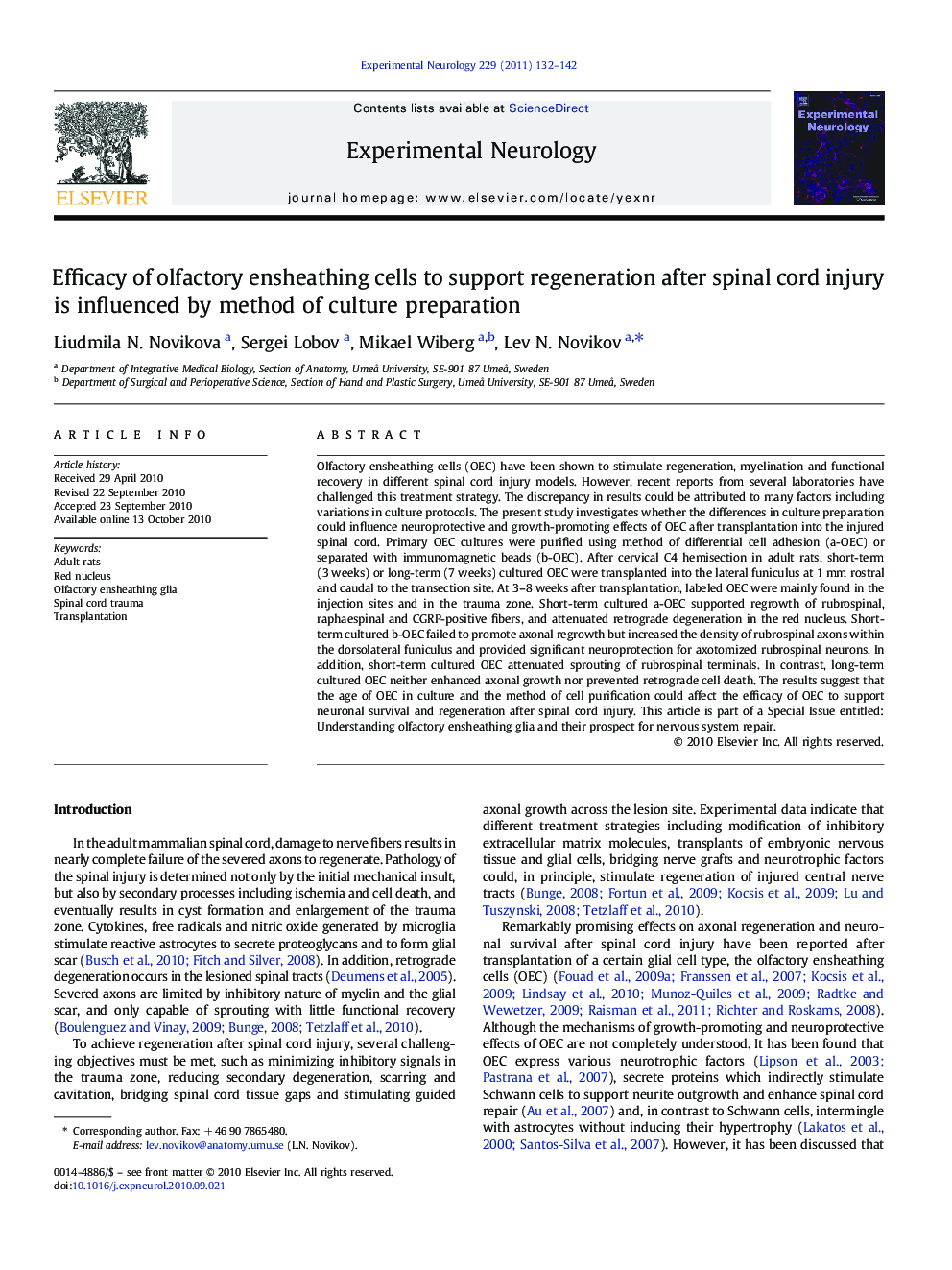| کد مقاله | کد نشریه | سال انتشار | مقاله انگلیسی | نسخه تمام متن |
|---|---|---|---|---|
| 6019196 | 1186540 | 2011 | 11 صفحه PDF | دانلود رایگان |

Olfactory ensheathing cells (OEC) have been shown to stimulate regeneration, myelination and functional recovery in different spinal cord injury models. However, recent reports from several laboratories have challenged this treatment strategy. The discrepancy in results could be attributed to many factors including variations in culture protocols. The present study investigates whether the differences in culture preparation could influence neuroprotective and growth-promoting effects of OEC after transplantation into the injured spinal cord. Primary OEC cultures were purified using method of differential cell adhesion (a-OEC) or separated with immunomagnetic beads (b-OEC). After cervical C4 hemisection in adult rats, short-term (3Â weeks) or long-term (7Â weeks) cultured OEC were transplanted into the lateral funiculus at 1Â mm rostral and caudal to the transection site. At 3-8Â weeks after transplantation, labeled OEC were mainly found in the injection sites and in the trauma zone. Short-term cultured a-OEC supported regrowth of rubrospinal, raphaespinal and CGRP-positive fibers, and attenuated retrograde degeneration in the red nucleus. Short-term cultured b-OEC failed to promote axonal regrowth but increased the density of rubrospinal axons within the dorsolateral funiculus and provided significant neuroprotection for axotomized rubrospinal neurons. In addition, short-term cultured OEC attenuated sprouting of rubrospinal terminals. In contrast, long-term cultured OEC neither enhanced axonal growth nor prevented retrograde cell death. The results suggest that the age of OEC in culture and the method of cell purification could affect the efficacy of OEC to support neuronal survival and regeneration after spinal cord injury. This article is part of a Special Issue entitled: Understanding olfactory ensheathing glia and their prospect for nervous system repair.
Research HighlightsâºShort-term cultured OEC rescue rubrospinal neurons from retrograde degeneration âºShort-term cultured OEC support axonal regeneration after spinal cord injury âºLong-term cultured OEC lost their neuroprotective and growth promoting effects
Journal: Experimental Neurology - Volume 229, Issue 1, May 2011, Pages 132-142